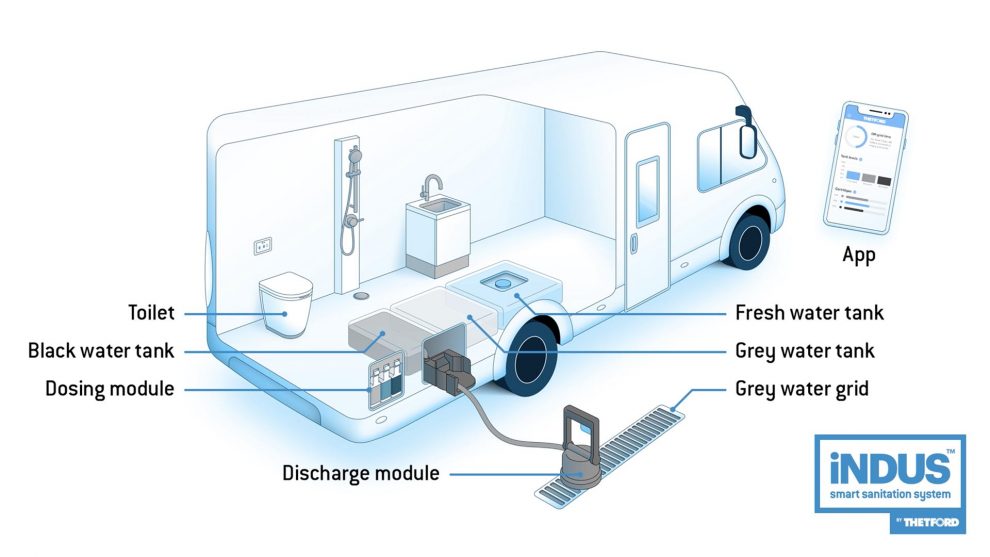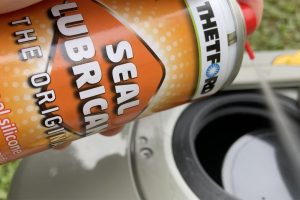May 27, 2020 – In the motorhome sector, innovations are as rare as whiteflies. Whole geological ages pass before a truly original product makes its appearance in this sector. So much so that if you take a vehicle of 15 or even 20 years ago you will find it hard to realize the passage of time if not for the continuous purely aesthetic research. A trivalent fridge is always a trivalent fridge, a gas stove top is almost always the same, the cassette toilet is practically unchanged since the day of its birth. Even control panels evolve with maddening slowness.
Just out of curiosity, we discovered very recently that the panel on our Falkor (a Hymer Exsis from 2005) is still mounted, just as it is, on a van that has just been presented to the market (not a Hymer brand, but we prefer avoiding the manufacturer’s name…).
What was presented a couple of days ago is therefore an epochal event. If successful, it will be remembered as the greatest innovation in RV history of the past 30 years. But even if it goes wrong and sales are limited it would still be a great idea. To make a comparison, an Alde water heating system is certainly not very popular, mainly because of its cost, but it is certainly an unparalleled technical solution.
Changing vehicle? Maybe better to wait…
The one announced by Thetford could remain confined to high-end vehicles or revolutionize the entire industry. It will depend on the welcome that fitters and customers reserve for it. It seems to us an innovation of such magnitude to say that if there was a small intention to change our motorhome it might be worth waiting a couple of years to see how it will end, rather than buying a vehicle today that become “Jurassic” in a very short time.
Have we intrigued you? Before going into the technical details, let’s see if we can tickle you a little longer. What would you say if instead of emptying the toilet cistern every one or two days; instead of emptying the gray water every three or four days; instead of dealing with smelly crates to be moved and emptied manually; instead of measuring the additives for the sanitation of the tanks by eye; instead of making maneuvers after maneuvers to make sure that the exhaust valve of your vehicle coincides perfectly with the exhaust grille… there was a single integrated system that eliminates, reduces or simplifies all this?
Loading and unloading every seven days
Well, Thetford, a company with a very long tradition in the cassette toilet industry, invented Indus. The name doesn’t seem like the best, but the idea is fantastic. The system intelligently combines the management of water and its tanks to achieve a result that sees: a single emptying of the tanks on average every seven days; a saving of drinking water quantified in 112 liters every four weeks; the elimination of the removable toilet cistern in favor of a single removable drain valve that brings together gray water and black water in a single point; automatic dosing of all additives; centralized system control via app. In short, a real revolution.
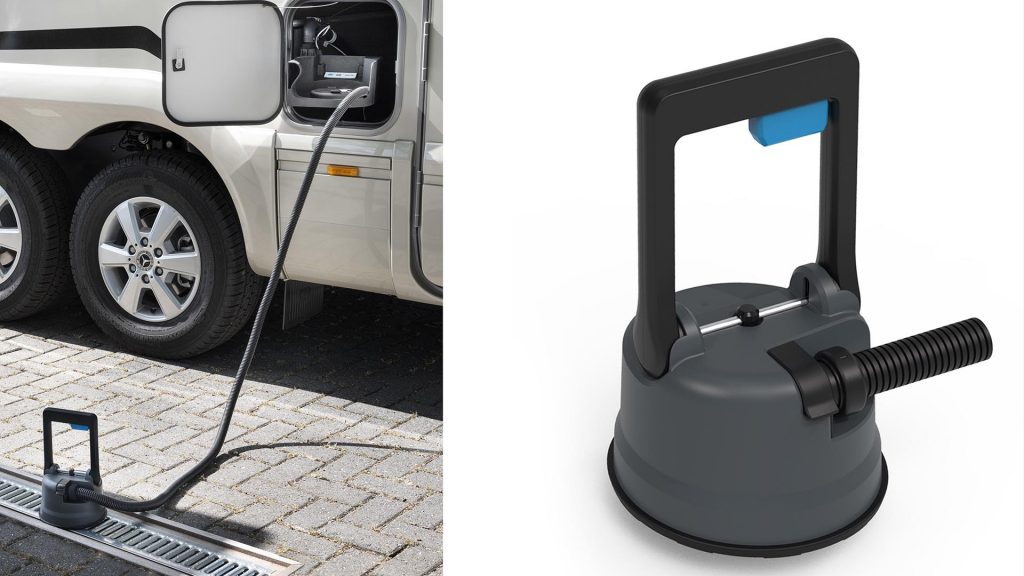
Indus uses gray water to rinse the toilet, equipped with a macerator that allows very little water to be used (200 or 500 milliliters at each flush). The gray and black water tanks are emptied through a single point equipped with a removable device, connected with a 2-meter-long pipe, to be positioned on the drain grate. Furthermore, there is no need to keep in your hand the device during the unloading phase: simply place it, open the valve, press the button to activate the process and the rest is managed by the system itself. At each operation, the tanks are automatically sanitized. In this way the operation is much simpler and cleaner.
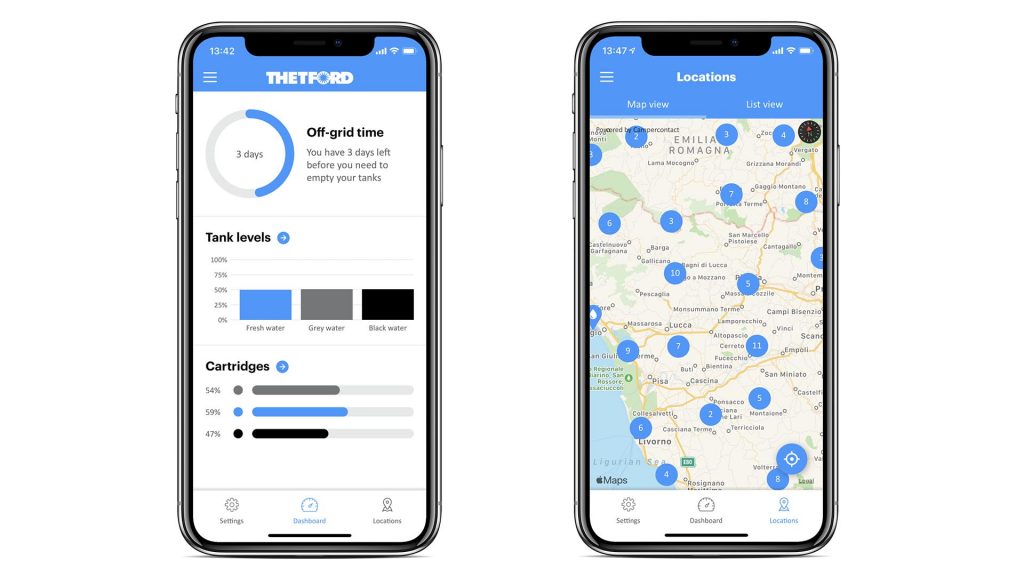
Automatically managed biodegradable additives
The three biodegradable additives – for gray water, black water and toilet flush water – are managed automatically. The system doses exactly what is needed based on the use of the system and the ambient temperature. The cartridges last for approximately 4 weeks before needing to be replaced. The Indus app provides information on liquid levels in real time.
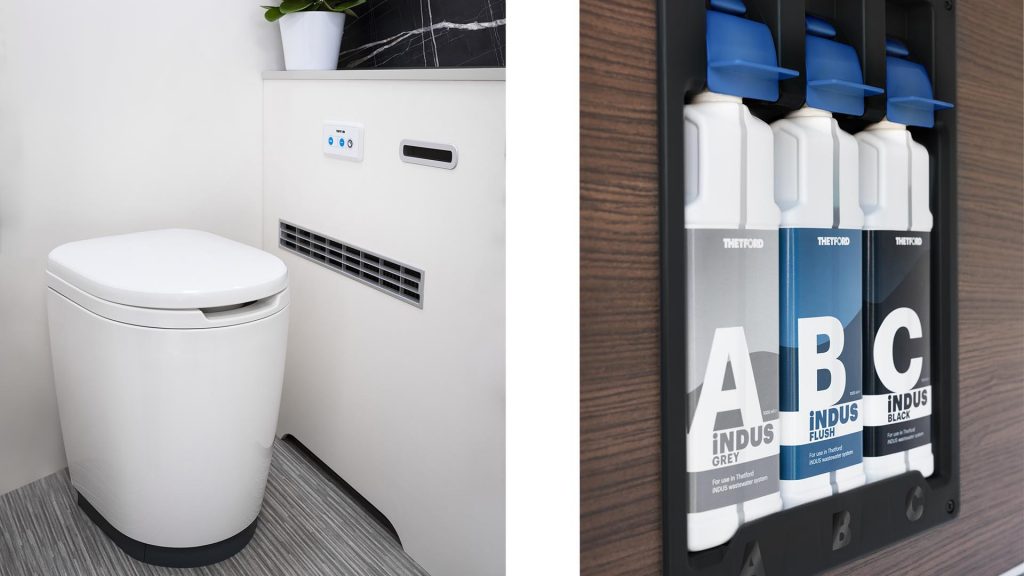
The whole system is completed with a new toilet, equipped with a “soft-closing” system of the lid and with an elegant design. It is extremely light (weighs only 7.5 kilograms) and can be positioned freely. leaving the designers of recreational vehicles ample freedom of maneuver in the design of the toilet room.
Now the word passes to the manufacturers, who must decide whether to embrace this new philosophy and therefore give it the impetus necessary to win over the final consumers. It will most likely also depend on the price of the system (which has not been disclosed) and its ease of integration into campervan layouts. This is definitely not something you can install after-market. But if you like the idea, you just have to wait. The first manufacturer to announce the use of Indus is the German Bürstner, which is expected to introduce the system in the 2021 range of its recreational vehicles.
© 2021 seimetri.it – If you want to leave a comment on this article, you can do it on our Facebook page











